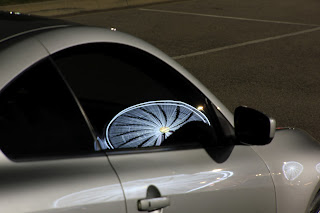Shutter Speed and Motion
As the title implies, this update is going to talk about shutter speed and how it affects the perception of motion. With DSLR cameras, you have the option to speed up and slow down the shutter speed. By doing this, you affect how motion shows up in your pictures. By leaving the shutter open a long time, the camera sensor captures any movement while the shutter is open, thus causing a blur. Intentional blur can really make a picture look nice. Flowing water is a popular subject for motion blur. My pictures in this update capture motion blur, but I'll get into that later.
By speeding up the shutter, you are freezing motion. Individual drops of water and action sports do well when using a fast shutter speed. You lessen your chances of blur and you end up with nice crisp shots. There are even techniques you can use to freeze motion even without using a super fast shutter. One of the more popular ones is referred to as panning, where you follow your moving subject with the camera. The result is that the moving object is in focus while your background is blurred. But, more on that at a later date once I've had some time to try it.
Ok, so it's that time. The time where I stop talking and post the pictures.
In these pictures you can see that the center of the wheel that doesn't move stays focused while the arms and gondolas blur. The lights on the arms of the wheel flashed in different patterns which translated into different patterns with the long shutter speeds. I think that was the most interesting part of these pictures. In the last picture, I noticed the reflection of the wheel in this car's window. I like reflections, whether on water or in glass, so I had to get this shot.
That's it for this update. I've have a few more posts coming through over the next few days. I have some night shots that I got last night and tomorrow is my weekly sunrise shoot. I learned a lot about my camera last night and I think you'll enjoy what I ended up with.
Until next time...





No comments:
Post a Comment